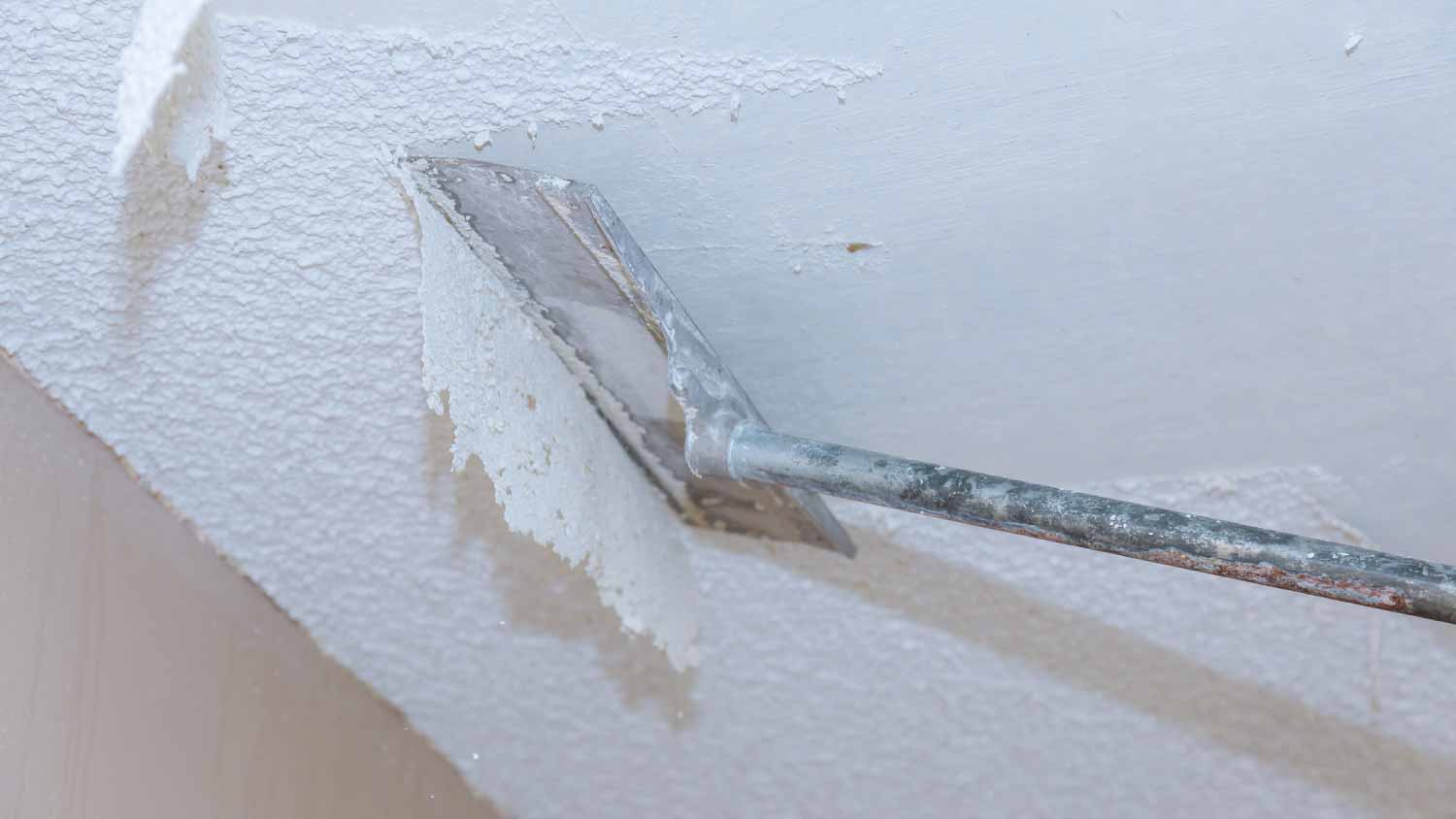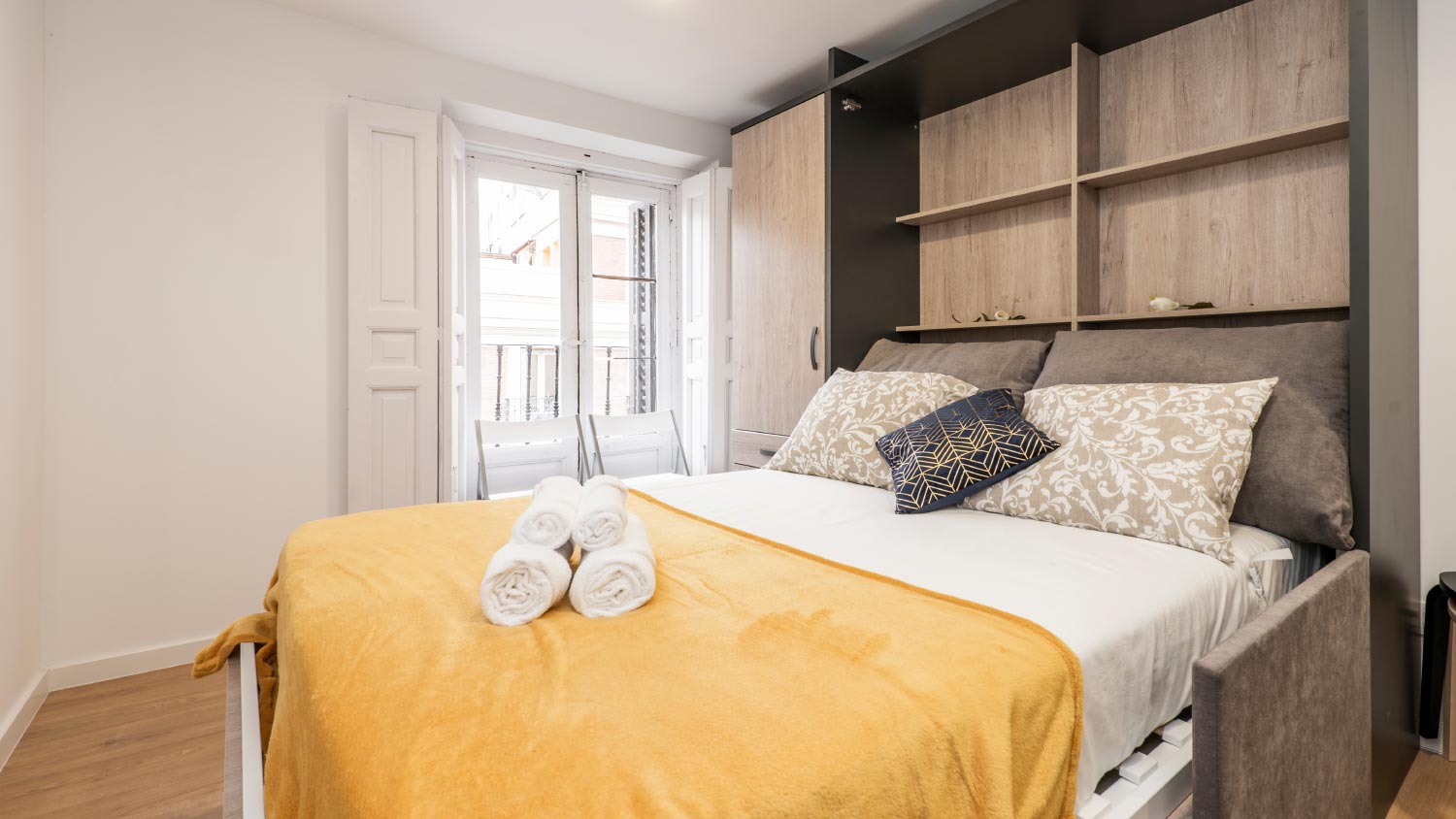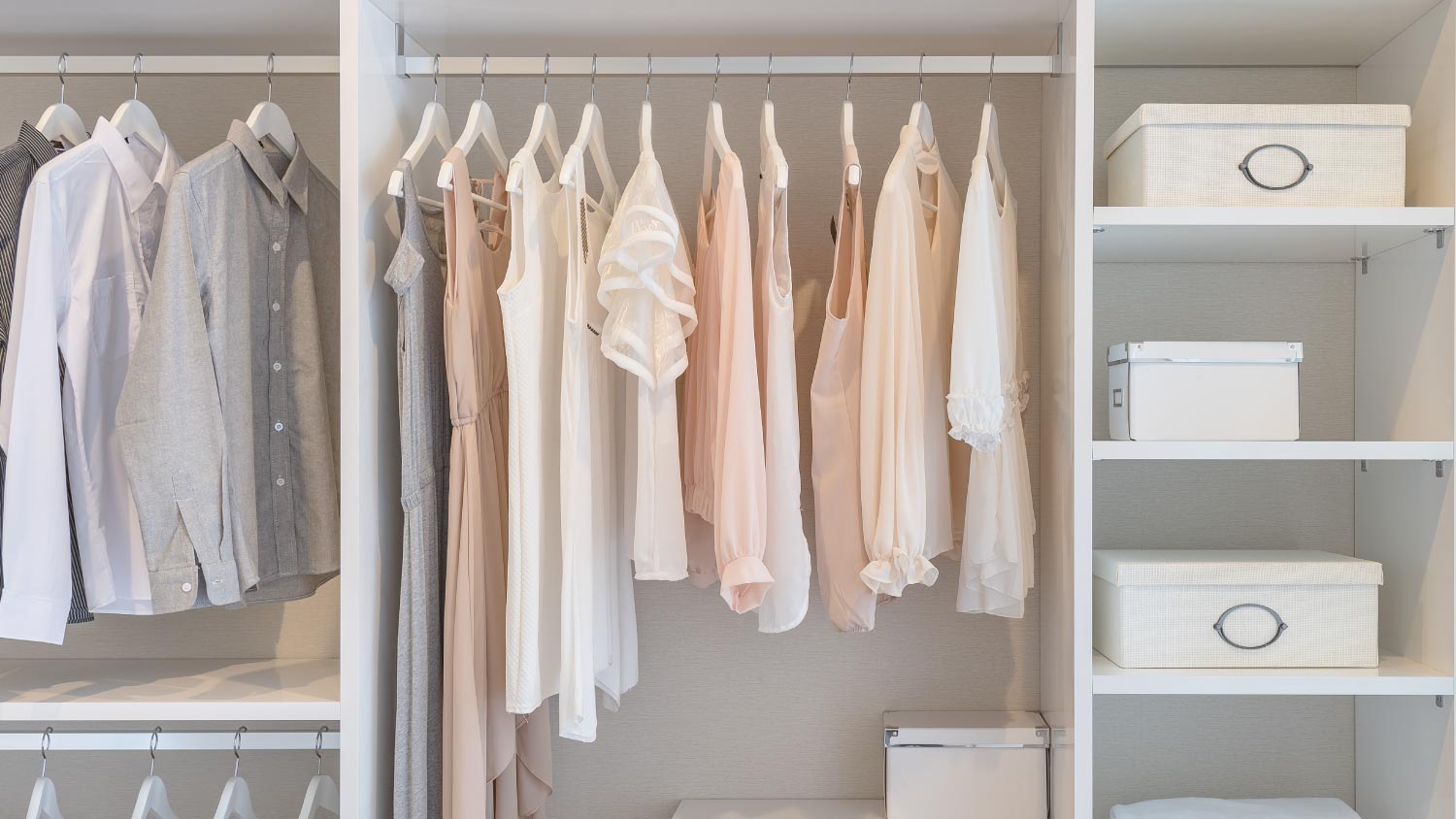
Wondering how much it costs to remove an acoustic ceiling? Get cost estimates, key factors, and expert tips to help you plan your ceiling update.
Find out if this retro furnishing is right for your home


This space-saving favorite was invented over 100 years ago.
Murphy beds are beloved today for tiny houses and micro-lofts.
Despite the many pros of Murphy beds, this furnishing also comes with a couple drawbacks to consider.
Though a Murphy bed may seem like a better fit for a black-and-white movie than a modern home, this inventive furnishing is uniquely fitted to many contemporary needs. Also known as a pull-down, wall, or cabinet bed, this decades-old design is rising in popularity. It’s an ingenious way to win back square footage or turn any room into a multifunctional space, which is a big win for studio apartments, tiny homes, and other small living spaces.
Not familiar with this old-school favorite? Keep reading to get to know the pros and cons of Murphy beds and if it could be the missing piece for your perfect home set-up.
When in use, a Murphy bed looks like any regular bed. But what makes this design different is that it folds up seamlessly into a wall, freeing a large amount of space during the day and making it a great idea for small bedrooms. Murphy beds are sold in an array of different sizes and styles, but most versions are hinged on one end for relatively easy opening and closing.
The Murphy bed was first invented by William Lawrence Murphy in the late 1800s, according to Smithsonian Magazine, but the design was most popular throughout the 1920s. Rumor has it Murphy had the idea to create it when he realized he’d need to transform his single-room apartment into a bedless parlor fit for entertaining. Little did he know, his design would still be used to make the most of small spaces more than100 years later.

This off-the-beaten-path bed option has a lot of potential benefits. Murphy beds are great for small homes because they don’t take up any space when they’re not in use, and they’re as comfortable as a traditional bed to boot. Keep reading to learn about all the pros of Murphy beds.
As micro-lofts and tiny homes become increasingly more common, so too do Murphy beds. “[People] are learning to get creative with the spaces they are given, and I believe Murphy beds fit well into our growing interest in minimalism,” says Andrea Martin of Ewa’s English Cottage.
Whether you live in a one-bedroom apartment and need to find a way to make it feel like you’re not constantly in your bedroom, or you do have more space and simply want to win back a bit of extra square footage for another use, a Murphy bed can certainly help you do it.
There is practically no difference in comfort level between a traditional bed and a Murphy bed. The mattress you choose is the only thing that may have an impact on how well you sleep (but this is true for any kind of bedtime setup).
Murphy beds are so beloved for micro-lofts, studio apartments, and tiny houses because they make it possible to entirely transform a space with little effort. “A living room becomes a bedroom, a loft an entertaining space, a bedroom an office,” Martin explains.
“The Murphy bed is perfect for saving space while also adding storage,” says Jessica Hamlet, of The Manor Antiques and Architecturals. “I personally love the idea of built-in shelving units for a small library that’s attached to a Murphy bed.”
Other ideas include a Murphy bed that’s also an entertainment center, a desk, or even an entire cabinet system for all your loose ends.
Despite their numerous pros, there are a few downsides to Murphy beds, as well. For starters, they can be a lot more expensive than traditional beds (and downright dangerous if not installed properly, which is why it’s a great idea to go with a pro for this project). Find out about all the potential cons below.
Murphy beds cost a bit more than traditional beds because they require extra steps to install. In general, you’ll pay between $1,000 and $7,500 and $3,000 on average to have one installed by a professional.
Murphy beds are a safe and convenient option for any home … as long as they are installed and used properly. In general, it’s always a good idea to anchor heavy furniture to prevent tip-overs, like a heavy Murphy bed. Even avid DIYers should consider hiring a local contractor for this task to ensure your space is as safe as possible.
But there are also a handful of other steps you can take to guarantee that no mishaps occur. Whenever opening and closing the bed, take time to ensure that all locks and safeties are properly secured to avoid the risk of unwanted pop-ups. Do it in a well-lit room to guarantee you don’t miss a thing, and you and your Murphy bed will both be good to go.
Early versions of the Murphy bed were often heavy and difficult to close, and that is still sometimes true today. Fortunately, more and more options are being made with lightweight materials and advanced spring mechanisms to eliminate this problem entirely. If, of course, you’ve found a vintage Murphy bed that you can’t let go, consider putting it in a space where it won’t need to be opened every day, like a guest room.
Building a Murphy bed from scratch is no easy feat, though doing so can save you a lot on overall expenses. However, it’s important that a Murphy bed be structurally sound and properly installed to avoid mistakes that could lead to serious injury for you or your loved ones. Most people should hire a local professional builder for this project unless they already have extensive carpentry experience.
Building and installing a Murphy bed yourself can cost as little as $100 and up to $500 for all the tools and materials involved. On the flip side, you’ll pay anywhere from $1,000 to $7,500 for a pre-fabricated frame and the cost to hire someone to install it—well worth the money to ensure your safety.
Pete Haka and his crew did a fantastic job for us and met our tight timeline with no surprises. Haka extended our concrete patio matching the cement color and installed decorative fencing. Highly recommend Haka!
If you want a professional, charismatic, and passionate interior designer who will bring your dreams to life you’ve found him. Dustin has transformed my house to an oasis and anyone who walks in says, “this is the nicest home I’ve seen!”. He genuinely cares and will bring more than you even...
Great, Jesse carefully hung shelves, a ceiling mounted drying rack, finicky mirror, and a decorative rug above a high staircase. He was quick and reasonably priced.
Had a great time with Interior Shade Studio. Prompt responses and great communication throughout the project!
This company is amazing! Isaac is one of the most conscientious hard workers that we have encountered. He does great work, is reliable, cleans up afterwards and is just an all around great person! Cannot recommend enough!!
H&G were AMAZING. This is the best this house has ever looked. I almost burst into tears when I walked it. Maria and her team were great communicators, made sure they understood what we needed and wanted, and let us know when they had questions. We have now booked them every two weeks and...
Great experience start to finish. Even had an issue with one of the doors they installed and they were super responsive and came out to fix it right away.
Chris was nice, polite and very understanding of what I was going through.
Kind painted my exterior. Everyone from the estimator, to the color consultant to, the project manager, foreman and crew were friendly and showed genuine passion for their company and their work. The crew was thorough and efficient and did a wonderful job in 11 working hours and the price was...
If the rating could go beyond 5-stars Weston and his team would get it! I have never had such quality customer focused business of any kind let alone from a construction/build business. I designed the patio and they sculpted and captured our dreams!
From average costs to expert advice, get all the answers you need to get your job done.

Wondering how much it costs to remove an acoustic ceiling? Get cost estimates, key factors, and expert tips to help you plan your ceiling update.

How much does an interior designer cost? Discover average prices, cost factors, and tips to help you budget for your next home design project.

Find out how much it costs to install crown molding by type and size. Use our expert guide to figure out how much crown molding you need, how much crown molding costs near you, and whether you need to hire a pro.

Wondering who to hire to install acoustic ceiling tiles? Learn which pro to call, how installation works, and what to expect. Get confident before you book.

Discover the cost to install a built-in wardrobe. Learn about average prices, installation factors, and ways to save on your custom storage project.

Reinvigorate your home with the summer-ready decor trends welcoming us into the sunniest days of 2025. Find your favorite among these top 10.